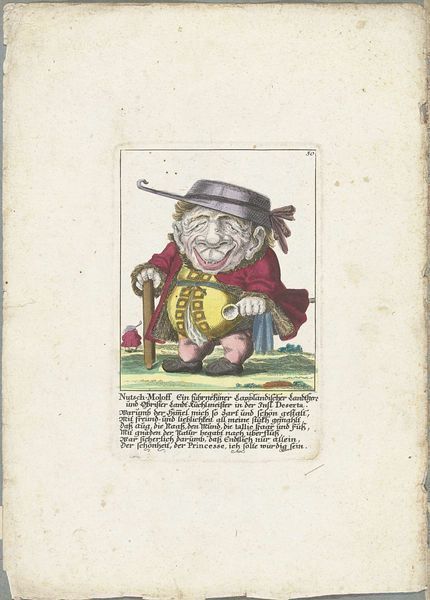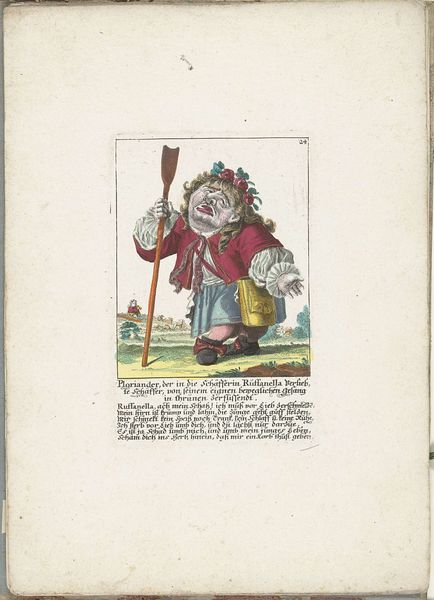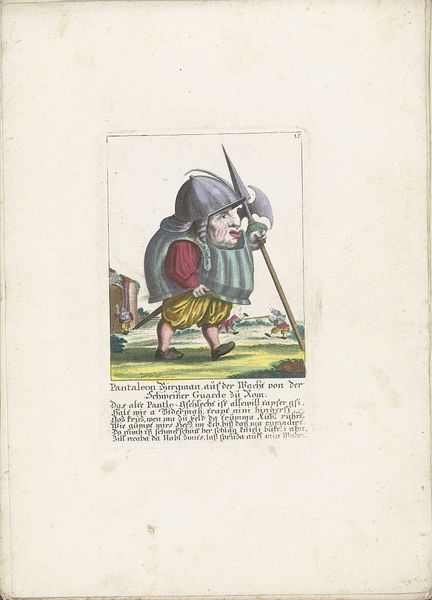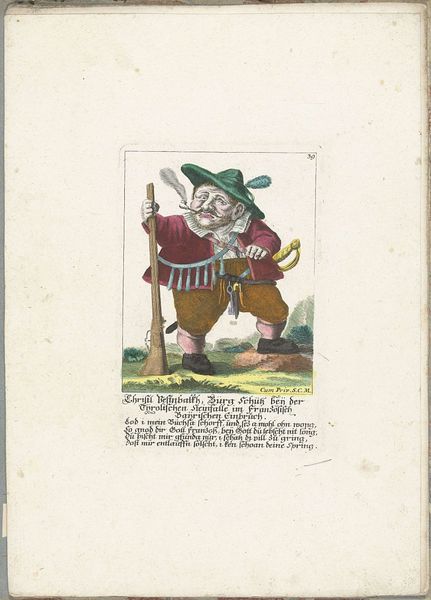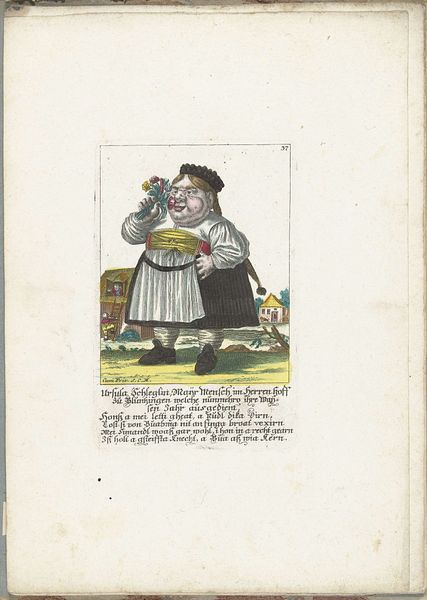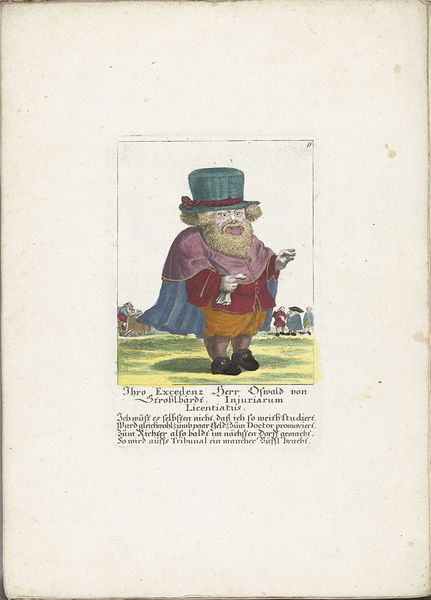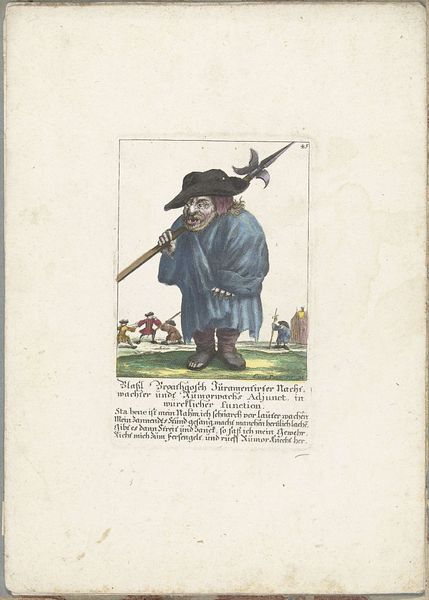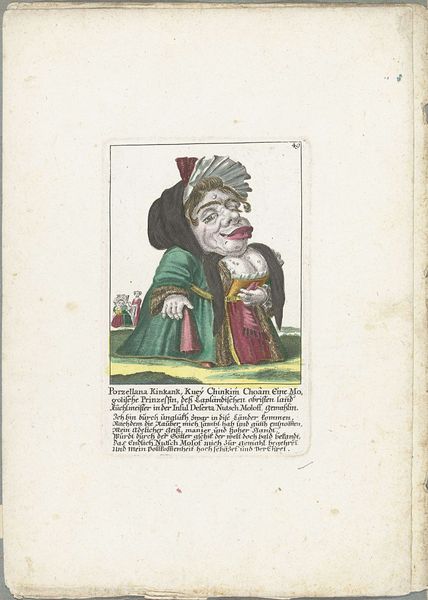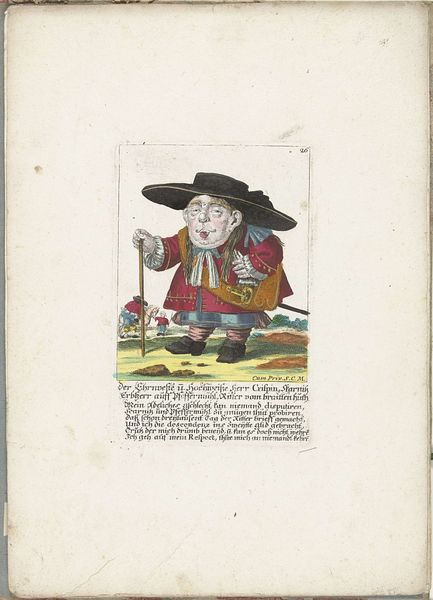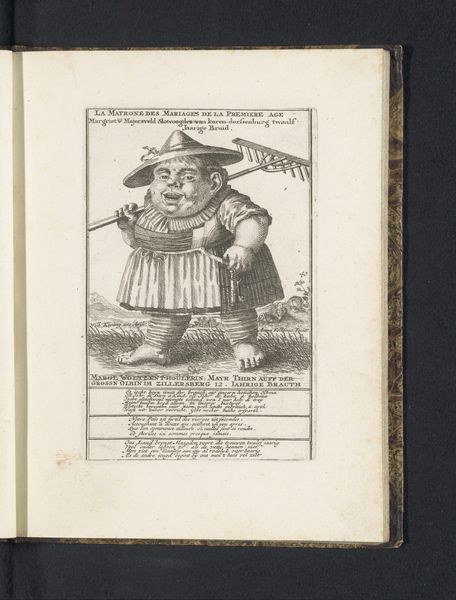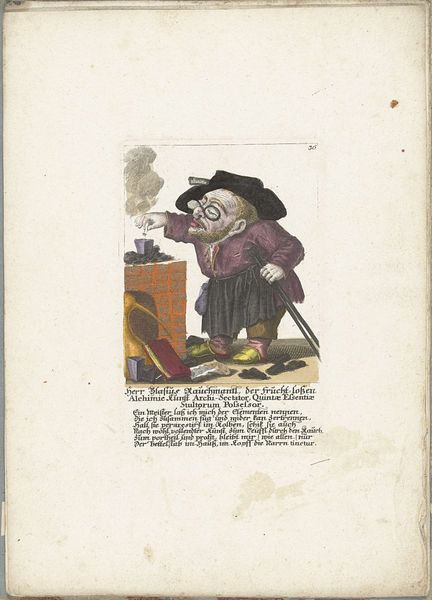
drawing, print, engraving
#
portrait
#
drawing
# print
#
coloured pencil
#
folk-art
#
genre-painting
#
engraving
Dimensions: height 170 mm, width 110 mm, height 320 mm, width 225 mm
Copyright: Rijks Museum: Open Domain
Curator: This print, crafted around 1710 by Martin Engelbrecht, is titled "De dwerg Margl Woltzenthoulerin". It's currently housed right here at the Rijksmuseum. Editor: It's strikingly direct. The color palette, although somewhat muted, draws the eye immediately to the figure's expression. There is a definite angularity in the construction. What strikes me is the combination of vulnerability and labor presented together. Curator: Precisely. Let's consider the context. Engelbrecht often engaged with representing various social strata and marginalized groups. This portrayal challenges conventional notions of beauty and normality, sparking discourse on body image and the societal marginalization of those deemed "different". Margl, presumably a working-class person, perhaps with dwarfism, is depicted not with mockery but a degree of respect or perhaps pity? Editor: Do you really find that this holds up to respect? The figure is quite plainly dressed and with rather ungainly construction, wouldn't you say? However, looking closely, I see how the rakes contrast quite dramatically to create movement; however, the stasis in the stance gives a more stoic rather than progressive understanding to be had with movement, like the contrast the face portrays as jolly and cheerful. Curator: Agreed, the portrayal is complicated, prompting us to think critically about representation and spectatorship. There's definitely commentary at play here with questions of how we see and judge the image. And perhaps on what standards. Editor: Exactly, seeing that the subject, technique, and materiality combine. Curator: Yes. And it is an open space for us as viewers to question where this stands among those ideas that reflect the nature of a historical lens today. Editor: Certainly it reveals itself slowly and only partially with just a few viewings and ideas discussed!
Comments
No comments
Be the first to comment and join the conversation on the ultimate creative platform.

